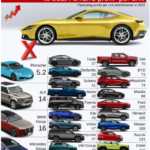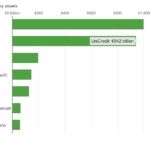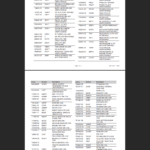Italy is making headlines in the past few weeks after the Greek crisis settled down at least temporarily. Part of the PIIGS list of countries, Italy has the second highest debt load at 119 % of the GDP while Greece leads the Euro zone at 142% of GDP.
The population of Italy is about 61 million and the size of the economy is about $1.7 Trillion in 2010. The country is highly divided between the prosperous North and the poor South. The CIA World Factbook notes the following on the Italian economy:
Italy has a diversified industrial economy, which is divided into a developed industrial north, dominated by private companies, and a less-developed, welfare-dependent, agricultural south, with high unemployment. The Italian economy is driven in large part by the manufacture of high-quality consumer goods produced by small and medium-sized enterprises, many of them family owned. Italy also has a sizable underground economy, which by some estimates accounts for as much as 15% of GDP.
Italy lags other European nations in many areas. The following are some of the reasons why Italy finds itself in the current fiscal crisis situation:
- In the past decade, Italy has suffered from low economic growth, weak productivity, and declining competitiveness.
- Among OECD countries, Italy has one of the lowest level of educational attainment in Italy.
- Italy’s excessive regulation hurts economic growth especially in parts of the service sector which remains highly protected from competition. For example, last year’s New York Times article Is Italy Too Italian? noted that an economics professor lamented on how he was charged 20 Euros by a taxi driver before he even started the ride to the Milan airport from his home. This type of daylight robbery occurs in Italy due to arbitrary rules set by the local taxi association which has a monopoly on the local market.
- An economy dominated by small and medium-sized enterprises, which are unable to exploit economies of scale in this age of globalization and race to the bottom.
- The tax burden is one of the largest in OECD but public expenditure is highly inefficient, especially in the South.
- The Italian judicial system is notorious for corruption and inefficient.The time to resolve civil cases is the longest in all OECD countries.
- Scientific innovation is few and far with R&D investment one of the lowest in the OECD area.
- The large regional disparities in terms of per capita income as well as labor market performance, in particular between the developed Center-North and the lagging South. The per capita GDP in the South is almost half of that in the North.
- Italy’s market share in world trade has declined significantly since the mid 1990s.
- Despite substantial improvements over the past decade, Italy’s labor market performance still lags behind other EU economies.
Source: Italy: Selected Issues, IMF, July 2011
Update:
1. Currently Italy spends $3.6 billion annually on a fleet 86,000 official cars. Under a new law, only the President and four other national leaders will get high performance cars courtesy of the state. (Source: Bloomberg BusinessWeek)
2. Italian lawmakers are among the highest paid politicians in Europe. In 2010, members of the lower house earned an average gross salary of more than $196K which is nearly double of that of U.K. lawmakers’ salary. In addition, politicians in Italy get free lodgings in Rome, flights and even taxpayer-subsidized haircuts. (Source: The Wall Street Journal)
Related ETF:
iShares MSCI Italy Index (EWI)
Disclosure: Long EWI



